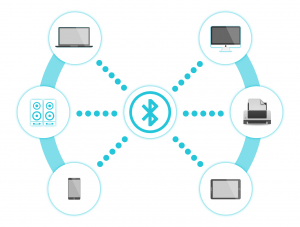The Future of Buyer and Customer Engagement
The global pandemic has accelerated the movement towards virtual buyer engagement and away from face-to-face engagement. This has resulted in changes in buyer behavior. Many sales as well as customer success leaders are now asking the question: moving forward, will we stick to the new methods of buyer and customer engagement or return to the old ways?
At recent meetings of the Houston and Chicago Sales Leadership Communities, sales leaders shared their thoughts regarding the pros and cons of virtual buyer engagement. In this blog, we will share some of their tips for strategically using the best of both virtual and face-to-face engagement in buyer and customer relationships. As leaders, we must coach our teams in best practices to ensure their buyer and customer relationships thrive.
First, let’s look at some pros and cons to virtual buyer engagement:
Pros of Virtual Engagement:
- Virtual saves time and money.
- Multiple people can more easily meet at one time.
- Seeing someone in their remote work location can create a more personal connection.
Cons of Virtual Engagement:
- It is more difficult to build trust virtually.
- Social cues and business culture are more challenging to understand.
- Virtual creates pressure regarding time and effective execution.
These are just a few pros and cons shared by the sales leadership community. What additional pros and cons have you experienced in the transition to solely virtual engagement?
With the option for face-to-face engagement opening back up, how do we use both methods of engagement moving forward? While we can and must discuss best practices, our methods of engagement will ultimately be dictated by our buyers and customers. See our tips below for coaching your teams to adapt methods of engagement for maximum impact in response to changes in buyer and customer behavior.
4 Tips for Effective Hybrid Buyer and Customer Engagement:
- Use the efficiency of virtual engagement to your advantage.
 With the faster pace of virtual engagement, buyers and customers want sales and customer success professionals to get to the point faster than ever before. This requires more preparation for virtual meetings through gaining competency in the use of virtual platforms and directing the structure and flow of meetings. One benefit of this faster pace in virtual engagement is that decisions can be made much quicker since all players in an opportunity can more easily meet in the same place at the same time. Encourage your teams to involve both your executives and buyer executives in meetings earlier in the relationship.
With the faster pace of virtual engagement, buyers and customers want sales and customer success professionals to get to the point faster than ever before. This requires more preparation for virtual meetings through gaining competency in the use of virtual platforms and directing the structure and flow of meetings. One benefit of this faster pace in virtual engagement is that decisions can be made much quicker since all players in an opportunity can more easily meet in the same place at the same time. Encourage your teams to involve both your executives and buyer executives in meetings earlier in the relationship.
Call out for sales and customer success leaders: Coach your teams in delivering streamlined messaging. You can do dry runs to practice pace of conversation and tactics for engaging buyers and customers quickly as well as maintaining that engagement.
2. Maintain buyer and customer interest through creative engagement strategies.
Perhaps the greatest challenge of virtual engagement is maintaining interest both during meetings and in between meetings. With your teams, consider how you can make meetings more enjoyable and more memorable. When people are on multiple virtual calls a day, what makes yours stand out? This may change depending on the stage of relationship with the buyer or customer. Encourage your teams to prepare talking points specific to a buyer or customer’s organization, industry, and location. In between meetings, mix up engagement when possible; find out what social platforms (LinkedIn, Facebook, Instagram, etc.) a buyer or customer uses to engage with them there. Call rather than email, since email volume has increased for everyone. If you must email, write compelling subject lines so your email stands out, as well as finding ways to encourage engagement with response and actions.
Call out for sales and customer success leaders: These same strategies apply to you as a leader as you engage your teams virtually. If your organization does not go back to the office, how will you effectively maintain engagement with your teams?
3. Strive to maintain authenticity and build rapport virtually.

Virtual meetings have diluted the traditional impact of traveling to a buyer or customer location to show interest in earning their business. Virtual engagement can seem less meaningful. With your teams, brainstorm ways to be extra thoughtful towards your buyers and customers. Perhaps decide to send a small gift or a handwritten note after initial meetings with potential buyers or key customer contacts. Support buyers and customers by interacting with them outside of trying to sell them something. Connect on an authentic level with best wishes for holidays, real interest in their charitable causes, and sincere concern when personal difficulties impact your buyer or customer. An easy way to maintain authenticity and build rapport is to use a personal background in your remote location rather than a stock virtual background. A simple bookshelf can tell others a lot about you, with photos and memorabilia from your life.
Call out for sales and customer success leaders: Once again, these principles apply to leaders as well. Remote work has encouraged more rapid turnover since the cost of changing jobs is drastically decreased when there is no change of location and work relationships are maintained virtually. As a leader, how can you create culture and camaraderie amongst your teams? Do your teams feel they are part of a common mission? Does each individual person and role have purpose?
4. Strategically plan face to face meetings to provide the most value.
While virtual engagement is likely to remain a primary form of buyer and customer engagement moving forward, in-person meetings are also returning. However, in person meetings are now associated with inconvenience compared to virtual meetings. How can your teams plan face to face interactions that are worth their time and the buyer’s or customer’s time? Engaging virtually is difficult, so consider having the first meeting with a new buyer or key customer contact in person. This will also lay a foundation for the relationship moving forward since the individual will feel they know you better than if they solely interact virtually. Also consider holding pivotal meetings in person, such as strategic meetings for advancing and winning an opportunity.
Call out for sales and customer success leaders: How can you apply this principle of strategic in person meetings to your teams? Whether you return to the office or stay remote, ensure you use in person meetings strategically to build deeper relationships and recognize the value of your team members’ time.
What are your thoughts on additional tips for strategically using virtual and face to face engagement?
For the full dialogue of the Houston Sales Leadership Community, you can listen and download here. For the full dialogue of the Chicago Sales Leadership Community, you can listen and download here. For more information on the Sales Leadership Community or how SOAR Performance Group can help your organization, visit soarperformancegroup.com.

